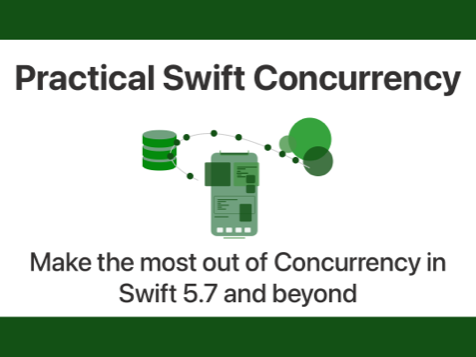In iOS 14 Apple added the ability for developers to create collection views that look and feel like table views, except they are far, far more powerful. To do this, Apple introduced a new UICollectionViewCell subclass called UICollectionViewListCell. This new cell class allows us to implement several tableviewcell-like principles, including accessories. Adding accessories to a […]
Read post
Subscribe to my newsletter and never miss a post
Recent articles
Jump to a random postIn iOS 14 Apple added the ability for developers to create collection views that look and feel like table views, except they are far, far more powerful. To do this, Apple introduced a new UICollectionViewCell subclass called UICollectionViewListCell. This new cell class allows us to implement several tableviewcell-like principles, including swipe actions. You can add […]
Read postConfigure collection view cells with UICollectionView.CellRegistration
Updated on: September 30, 2020In iOS 14 you can use the new UICollectionView.CellRegistration class to register and configure your UICollectionViewCell instances. So no more let cellIdentifier = "MyCell", no more collectionView.dequeueReusableCell(withReuseIdentifier: "MyCell", for: indexPath) and best of all, you no longer need to cast the cell returned by dequeueReusableCell(withReuseIdentifier:for:) to your custom cell class. Adopting UICollectionView.CellRegistration in your project […]
Read postViews in SwiftUI are thrown away and recreated regularly. When this happens, the entire view struct is initialized all over again. Because of this, any values that you create in a SwiftUI view are reset to their default values unless you’ve marked these values using @State. This means that if you declare a view that […]
Read postIn SwiftUI, views can be driven by an @Published property that’s part of an ObservableObject. If you’ve used SwiftUI and @Published before, following code should look somewhat familiar to you: class DataSource: ObservableObject { @Published var names = [String]() } struct NamesList: View { @ObservedObject var dataSource: DataSource var body: some View { List(dataSource.names, id: […]
Read postIgnore first number of elements from a publisher in Combine
Published on: June 19, 2020If you have a Combine publisher and you want to ignore the first n elements that are published by that publisher, you can use the dropFirst(_:) operator. This operator will swallow any values emitted until the threshold you specify is reached. For example, dropFirst(1) will ignore the first emitted value from a publisher: [1, 2, […]
Read postRecursively execute a paginated network call with Combine
Published on: June 15, 2020Last week, my attention was caught by a question that Dennis Parussini asked on Twitter. Dennis wanted to recursively make calls to a paginated API to load all pages of data before rendering UI. Since I love Combine and interesting problems I immediately started thinking about ways to achieve this using a nice, clean API. […]
Read postA Double and Float are both used to represent decimal numbers, but they do so in slightly different ways. If you initialize a decimal number in Swift using as shown below, the Swift compiler will assume that you meant to create a Double: let val = 3.123 // val is inferred to be Double The […]
Read postProperty wrappers are a feature that was introduced in Swift 5.1 and they play a huge role in SwiftUI and Combine which are two frameworks that shipped alongside Swift 5.1 in iOS 13. The community was quick to create some useful examples that were embraced by folks relatively quickly. As a user of property wrappers, […]
Read postThis week I wanted to write about something non-technical. And while the topic of this week’s post isn’t a technical one, I think it’s an important topic for developers who want to expand their knowledge, and deepen their skills. I have been a developer professionally for more than ten years at this point and in […]
Read postExpand your learning with my books

Learn everything you need to know about Swift Concurrency and how you can use it in your projects with Practical Swift Concurrency. It contains:
- Eleven chapters worth of content.
- Sample projects that use the code shown in the chapters.
- Free updates for future iOS versions.
The book is available as a digital download for just $39.99!
Learn more